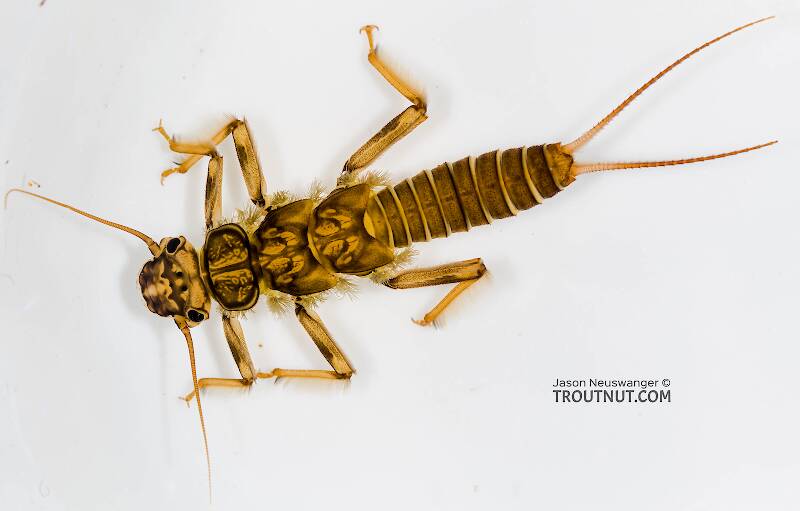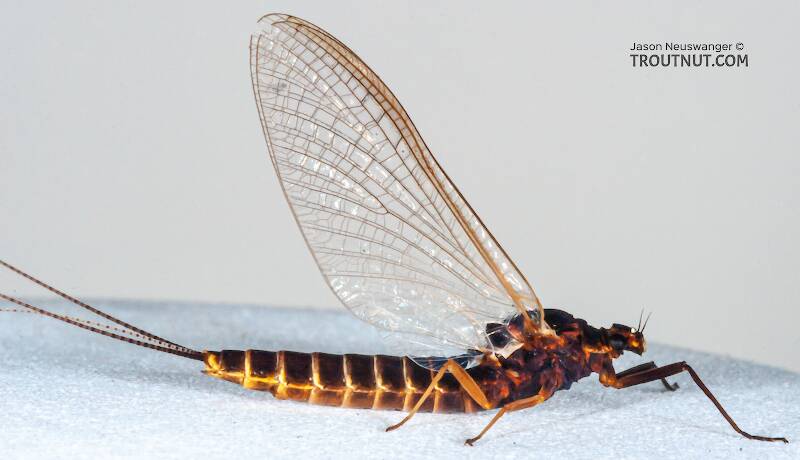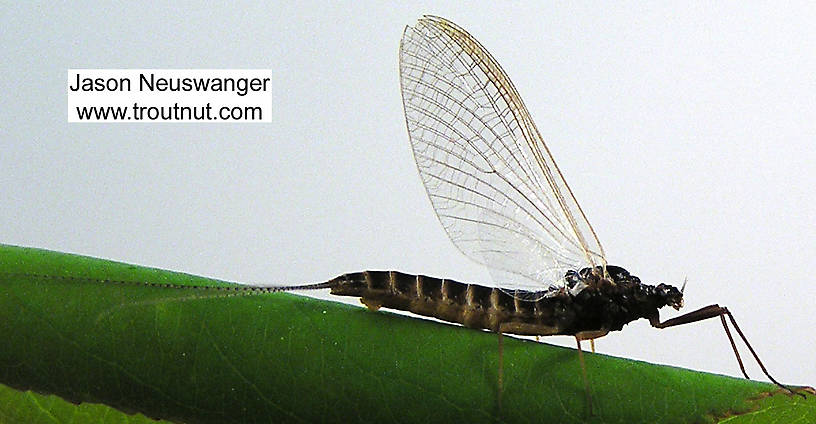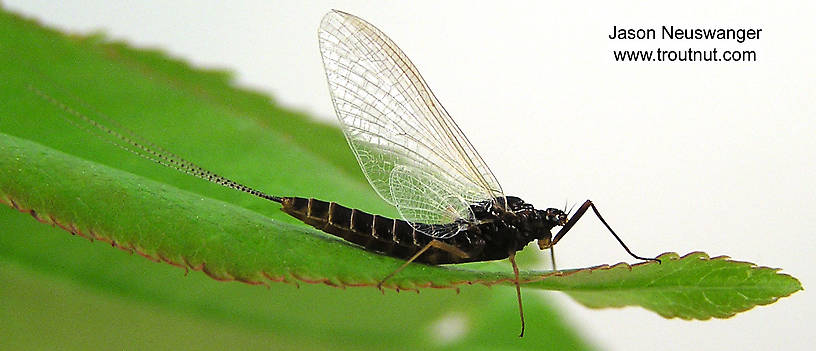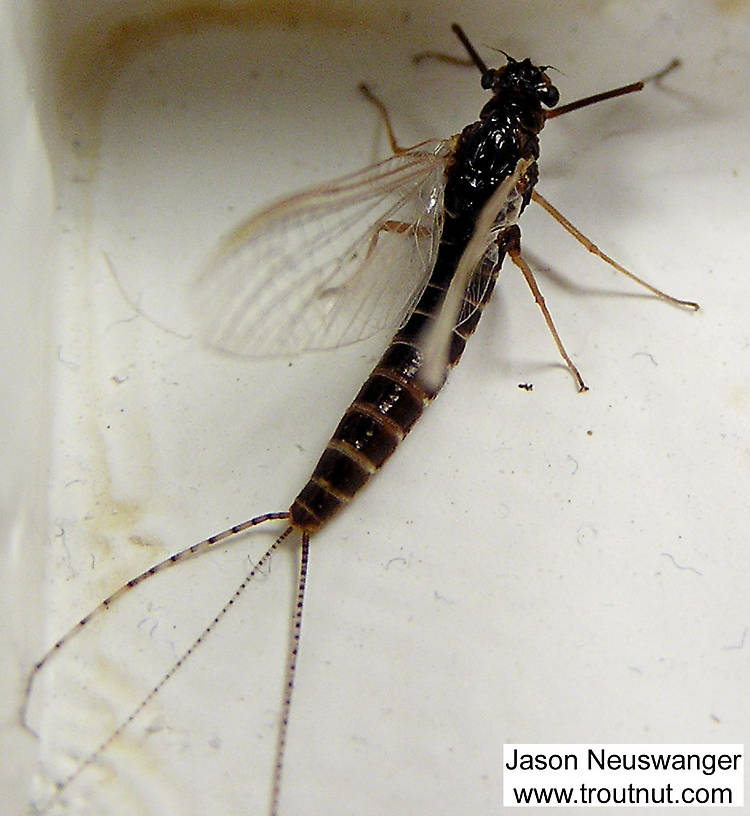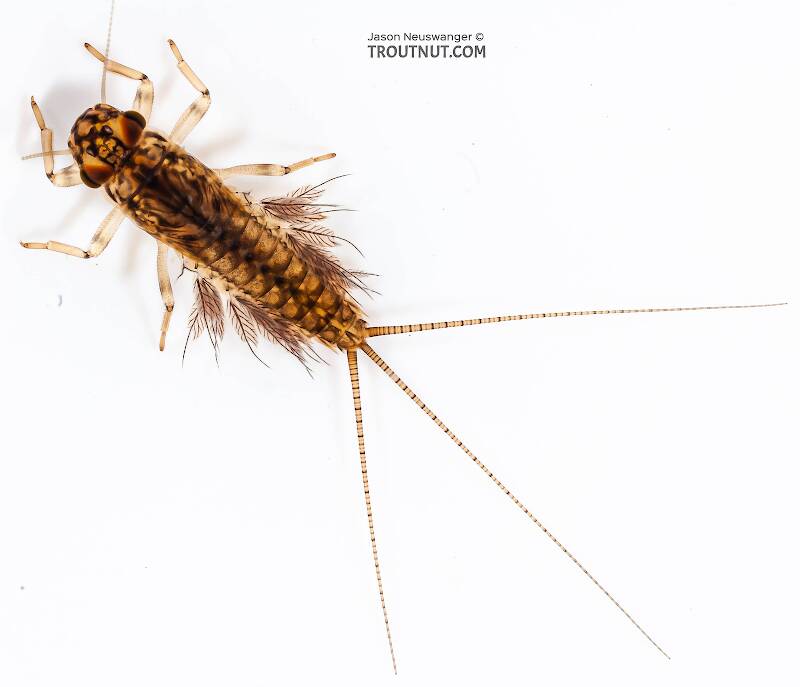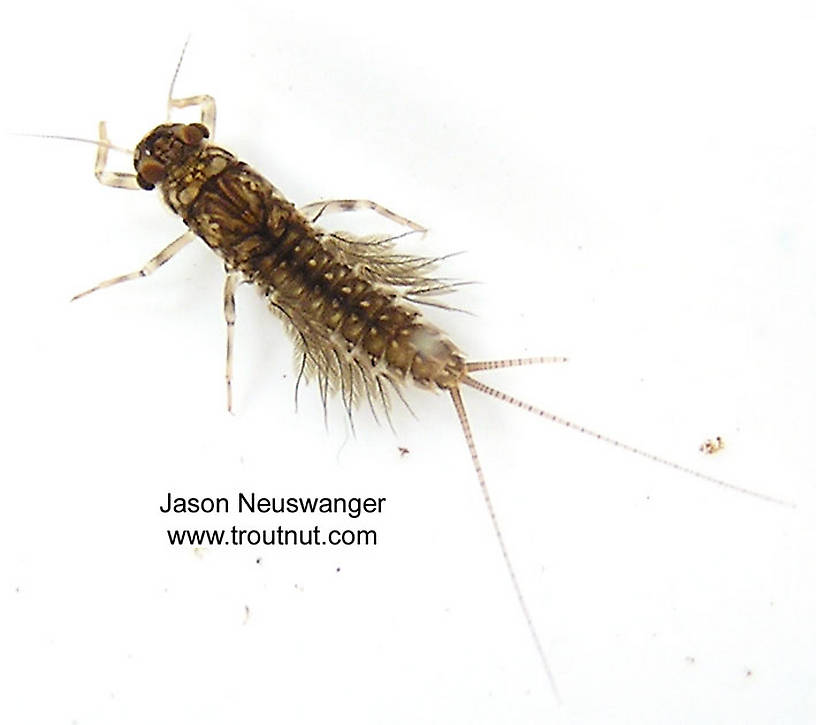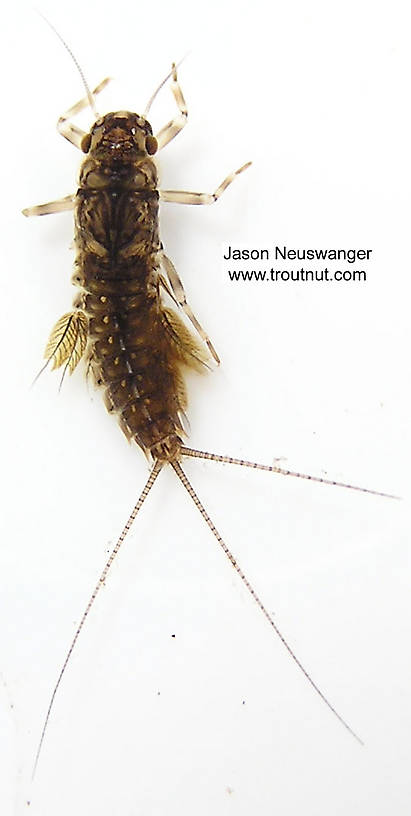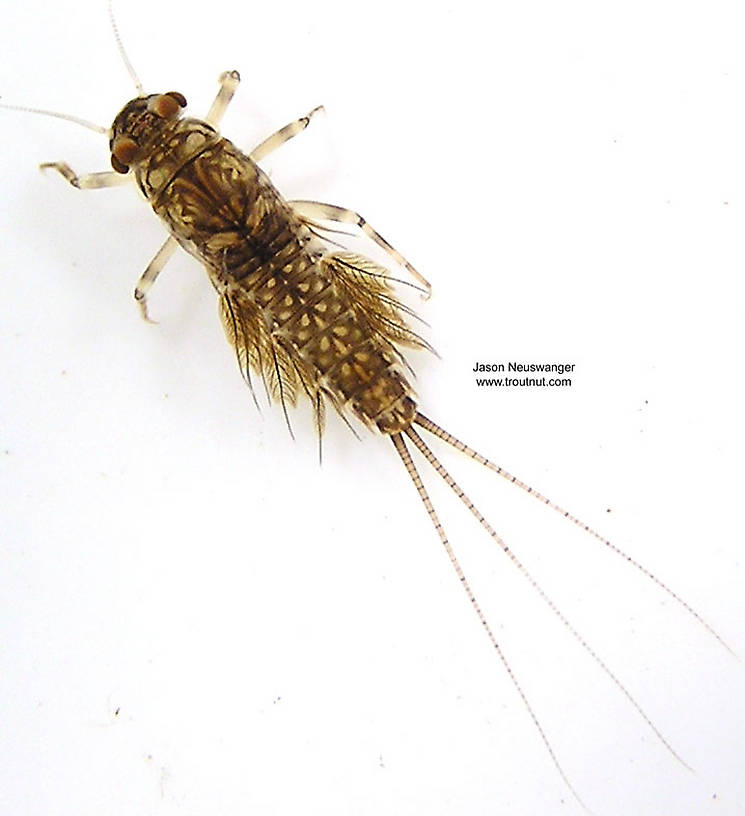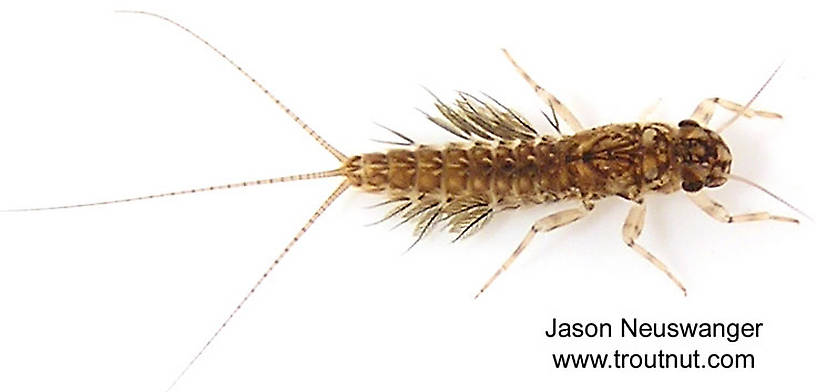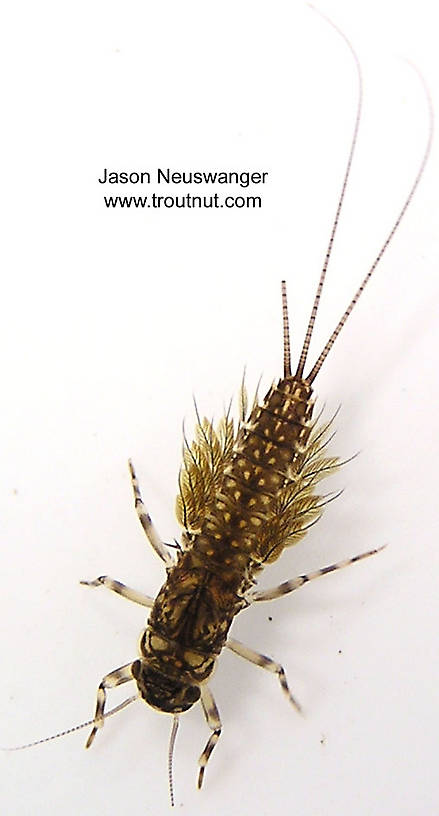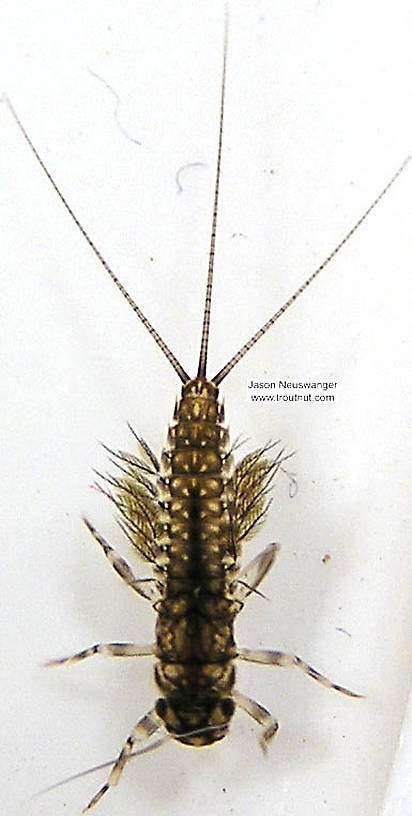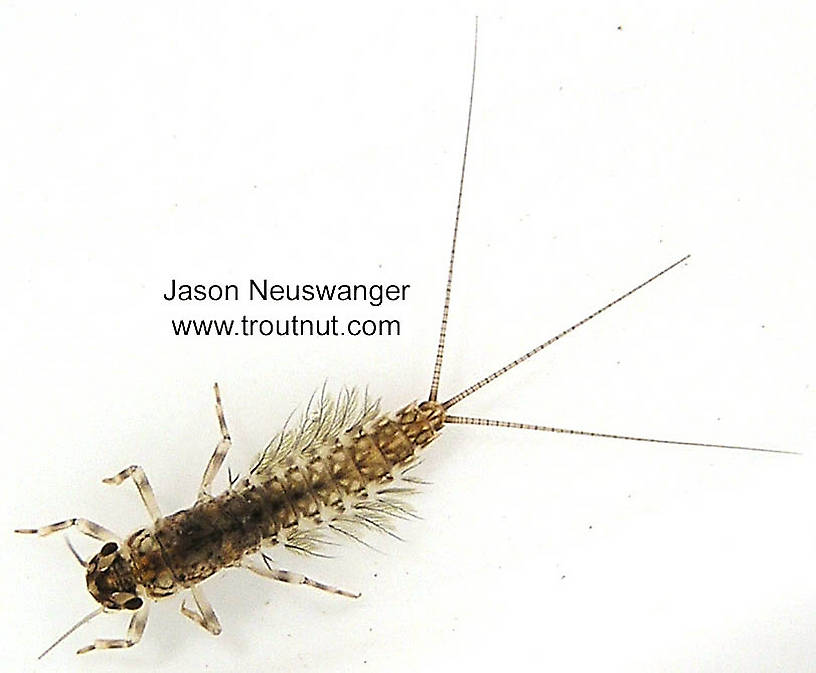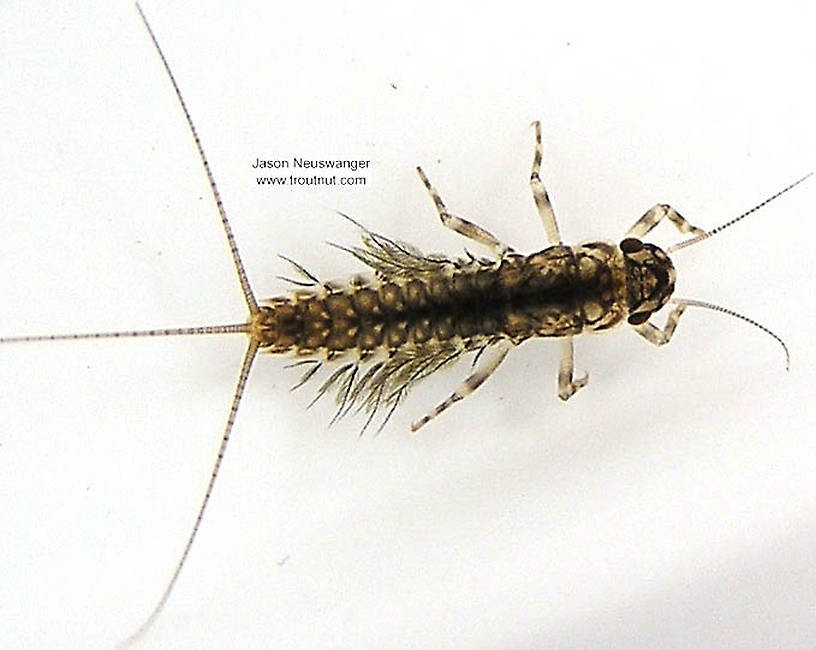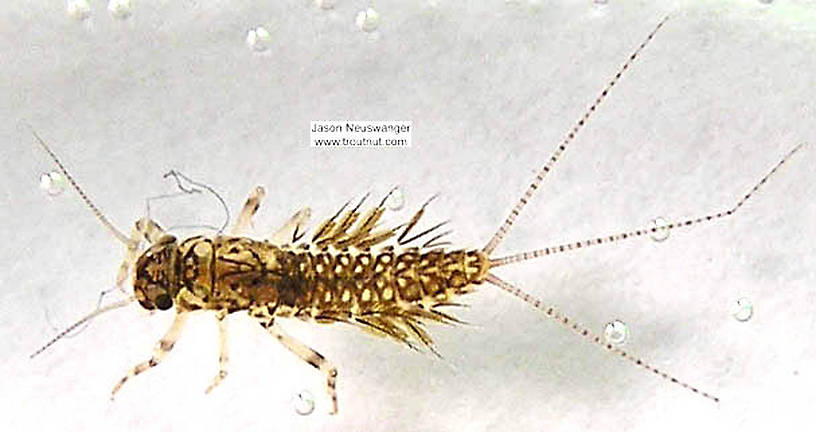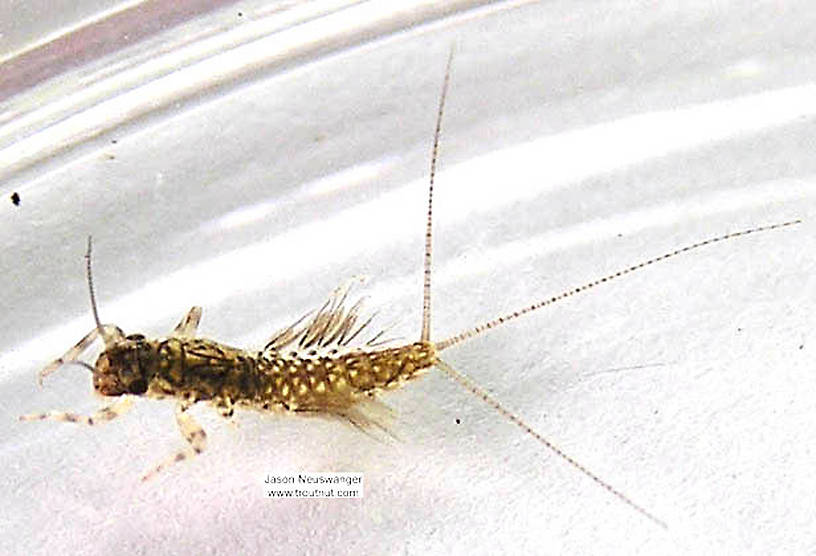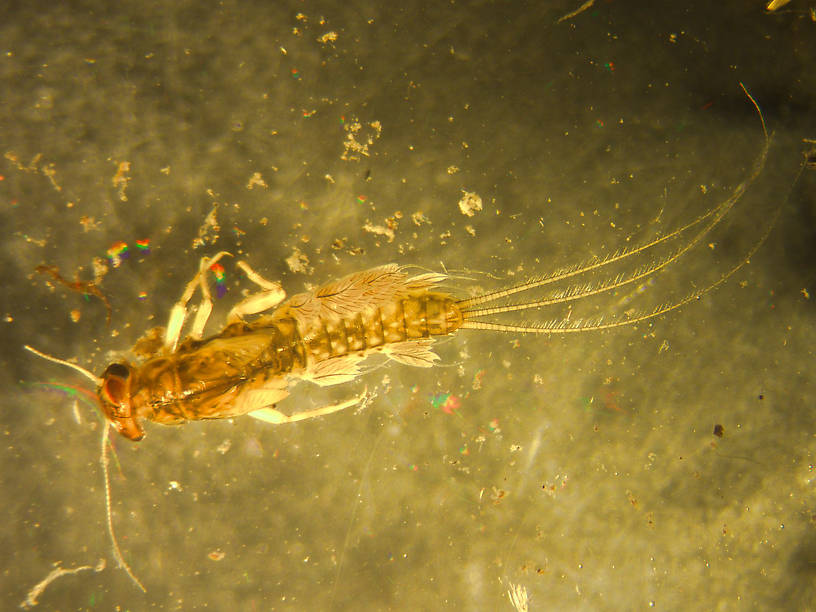
Hex Mayflies
Hexagenia limbata
The famous nocturnal Hex hatch of the Midwest (and a few other lucky locations) stirs to the surface mythically large brown trout that only touch streamers for the rest of the year.

Mayfly Species Leptophlebia cupida (Black Quills)
See the main Leptophlebia page for details about their nymphs, hatching, and egg-laying behavior. This is by far the most important species of that genus.
Where & when
Very sporadic stragglers may emerge throughout the rest of the summer, but they are not important to trout.
In 77 records from GBIF, adults of this species have mostly been collected during April (32%), May (23%), June (22%), and March (13%).
In 23 records from GBIF, this species has been collected at elevations ranging from 568 to 8871 ft, with an average (median) of 4948 ft.
Species Range
Physical description
Most physical descriptions on Troutnut are direct or slightly edited quotes from the original scientific sources describing or updating the species, although there may be errors in copying them to this website. Such descriptions aren't always definitive, because species often turn out to be more variable than the original describers observed. In some cases, only a single specimen was described! However, they are useful starting points.
Male Spinner
Wing length: 8-12 mm
This is a shining brown species with pale legs and conspicuously ringed tails. Antennae brown, ringed with yellow at the base. Thorax above shining brown with a yellow streak in the notal furrow on each side. Wings hyaline with brown veins and scarcely any darkening of the stigmatic area. Legs yellow to pale yellowish brown, a little darker on the front of the femur and with narrow brown cross marks on both ends of it. Abdomen yellowish brown, paler beneath, darker at the ends above, and with pale rings on the joinings of the middle segments. These become obscured in old specimens. Mid-dorsal pale line evident, interrupted on the front half of each tergite. Paired oblique marks short, subtriangular, more or less obscured. Genitalia pale brown in ground color. Tails whitish, joinings rich dark brown.
Described as B. collinus
Body length 10 mm, wing length 9.5-10 mm
The thorax is very dark brown above, dark reddish brown below, and somewhat lighter on the sides. The brown pronotum is paler on its hinder margin. The legs are nearly uniform yellowish to reddish brown. Wings hyaline, with the long veins of the costal strip brown (edit by Troutnut: it's unclear what the "costal strip" means, but my guess would be the costa, subcosta, and maybe also vein R1), darkened toward the wing roots, and with the faintly brown irregular cross veins of the stigmatic area extensively conjoined.
Abdomen nearly uniform brown above, hardly paler on the middle segments, but distinctly paler beneath. Dorsum without median pale line, but with narrow double mid-dorsal black line; the paired oblique marks are almost obsolete. The spiracles are distinctly marked with black. Tails dark reddish brown, distinctly ringed with darker brown on the joinings of the segments, the rings alternately wider and narrower on the basal third. Genitalia yellowish.
Described as B. cupidus
Body length 9-11 mm, wing length 10-12 mm
This is a blackish species with sub-hyaline wings that are opaque and stained with brown in the stigmatic area. Antennae wholly brown. Legs brown, darker on the first femora with knee caps narrowly black. Wings hyaline with brown veins that are distinctly darkened in the stigmatic area where the cross veins are irregular and somewhat anastomosing.
Abdomen dark brown above becoming blackish toward the ends with the apex of the tenth segment yellowish. Minute black elongate dashes mark the spiracles at the side margin. Under parts fawn color with the ninth sternum distinctly darker brown. The pale mid-dorsal line of the abdomen is obscure or wanting. The paired oblique spots are more or less crescentic and suffused with blackish in old specimens. The tails are obscurely ringed with brownish bands on the joinings of the segments; for a distance beyond the base the rings are alternately wide and narrow. Penes as in fig. 138.
Described as B. gravastellus
Body length 8-10 mm, wing length 8-12
This is a blackish-brown-legged species with sub-hyaline yellowish veined wings; antennae brown. Thorax black above and below with paler streaks in the lateral sutures. Legs wholly brown, especially the fore legs. Wings with brownish veins except in the hyaline basal portion; the regular cross veins of the stigmatic area somewhat opaque.
Abdomen brown, paler beneath, the color of the under surface being fairly uniform from end to end; on the dorsal side the middle segments are of a lighter brown with distinct rings of paler color on their joinings. The mid-dorsal pale line is very faint, but broadly dilated at the hind margin of the middle segments. The paired oblique spots are obscure, linear, confluent in front with the pale intersegmental rings. Genitalia of the male yellowish, darker toward the apex. Tails brown, ringed obscurely with somewhat darker brown, and the rings of nearly uniform appearance.
Specimens of the Mayfly Species Leptophlebia cupida
1 Male Dun
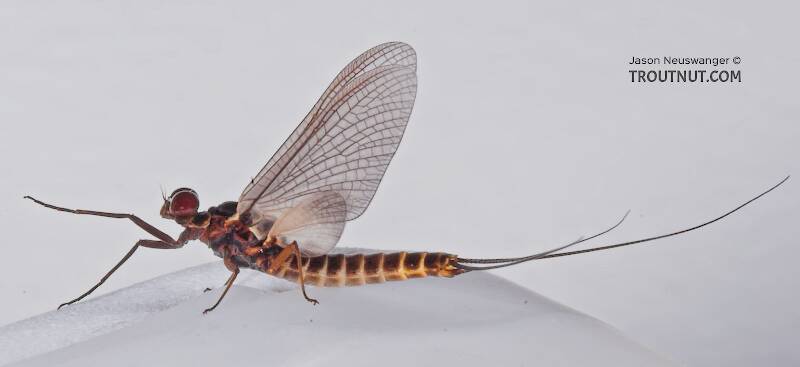
4 Female Spinners
12 Nymphs
1 Video of Leptophlebia cupida Mayflies:
In angling books, Leptophlebia mayfly nymphs have a reputation as poor swimmers. In reality, they're very adept swimmers, much moreso than most other mayfly nymphs categorized as "crawlers."
Discussions of Leptophlebia cupida
Start a Discussion of Leptophlebia cupida
References
- Arbona, Fred Jr. 1989. Mayflies, the Angler, and the Trout. Nick Lyons Books.
- Knopp, Malcolm and Robert Cormier. 1997. Mayflies: An Angler's Study of Trout Water Ephemeroptera . The Lyons Press.
- Leonard, Justin W. and Fannie A. Leonard. 1962. Mayflies of Michigan Trout Streams. Cranbrook Institute of Science.
- Needham, James G., Jay R. Traver, and Yin-Chi Hsu. 1935. The Biology of Mayflies. Comstock Publishing Company, Inc.
- Schwiebert, Ernest G. 1955. Matching the Hatch. MacMillan Publishing Company.
- Swisher, Doug and Carl Richards. 2000. Selective Trout. The Lyons Press.
Mayfly Species Leptophlebia cupida (Black Quills)
Species Range
Common Names
Resources
- NatureServe
- Integrated Taxonomic Information System
- Global Biodiversity Information Facility
- Described by Say (1823)


